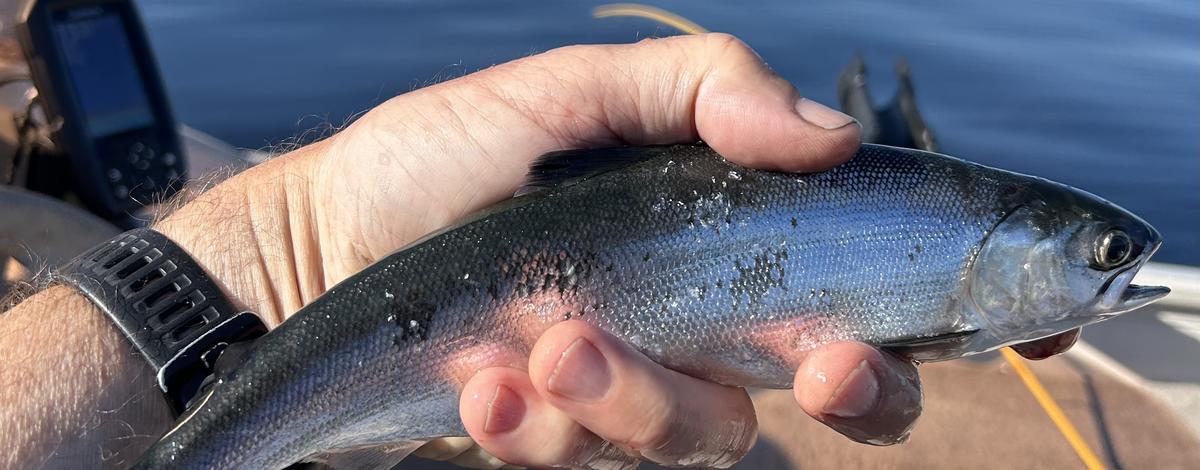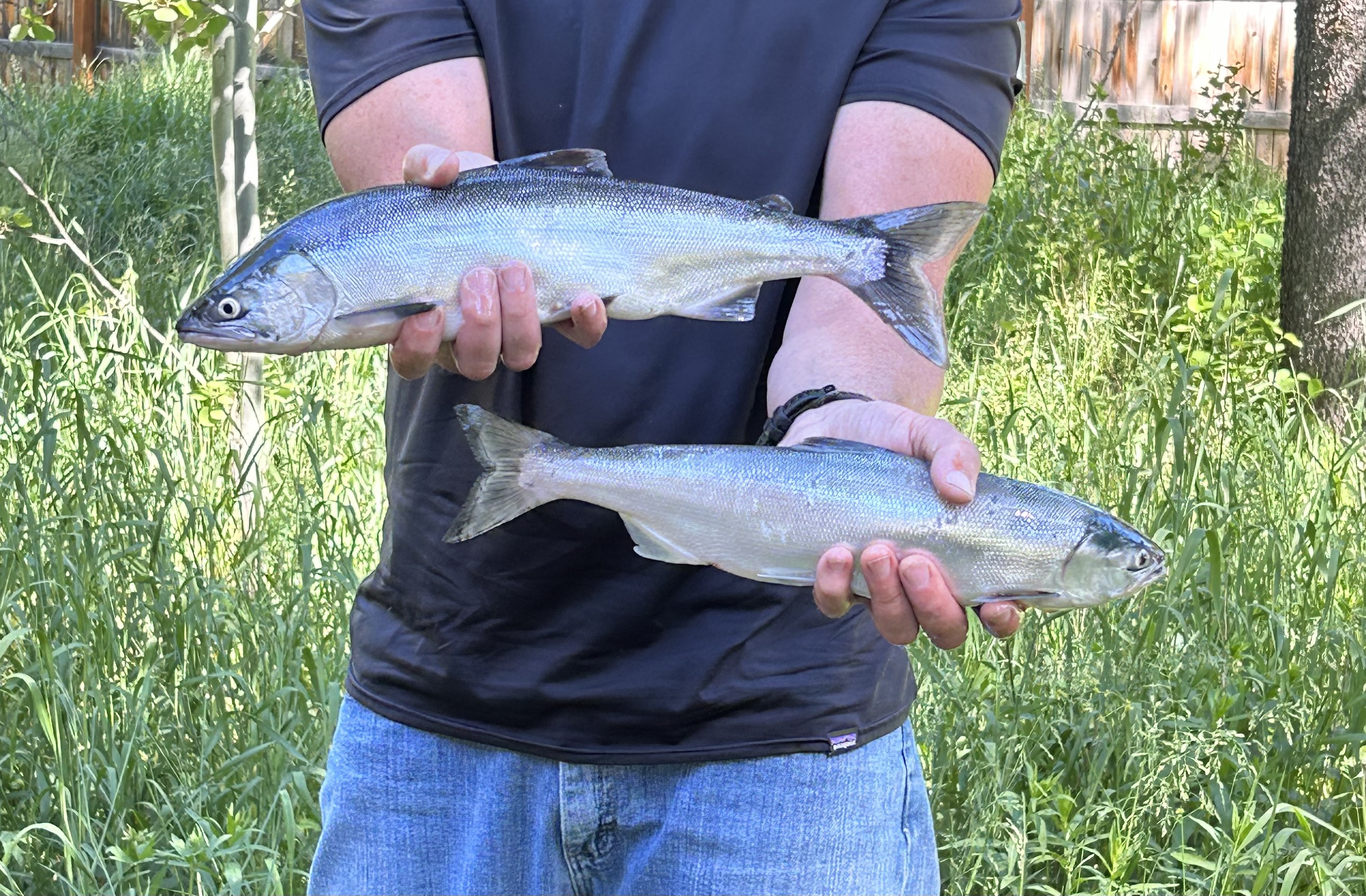If you ask kokanee anglers what they want, odds are good they will say more fish and bigger ones. That’s not being greedy, that’s just an honest answer about what they’d prefer. But there are tradeoffs, variables and unknowns that keep “more and bigger” from happening, which is the cold shower of reality when it comes to kokanee fishing.

An Angler's Guide to Kokanee Management: How F&G manages cyclical populations (VIDEO)
Kokanee are stocked throughout the state and success depends on stocking and conditions
Managers are listening, and striving for consistency
Idaho Fish and Game biologists are constantly working with anglers to provide good kokanee fishing within the limitations of the fish’s life cycle. Idaho kokanee are a mix of wild and hatchery fish, though most fisheries contain both. Fish and Game staff stock kokanee annually, or periodically, in almost all waters that contain kokanee so managers can provide sustainable and fishable populations.
Unlike catchable rainbow trout raised in hatcheries and released ready for anglers to catch, kokanee are stocked as fingerlings and need years in lakes and reservoirs to grow to catchable sizes.
Most of a kokanee’s diet consists of plankton, which are small, aquatic organisms barely visible to the human eye. Plankton abundance (or scarcity) is driven by water conditions, and when plankton thrive, kokanee thrive, and vice versa. It takes at least 2 to 3 years for a stocked fingerling to grow to catchable size, but biologists can’t accurately forecast how much food will be available from year to year.
If there’s enough plankton to feed all the young kokanee, more and bigger fish might be a possibility, but there’s usually a limited food supply, so the trade off is fewer bigger fish or more smaller fish. If conditions are extremely poor, you may get neither.
Kokanee live about 3 to 5 years and die after spawning, so their populations are relatively short-lived and cyclical. Regardless of their size, they will spawn between ages of three to five. Under ideal water conditions, a kokanee could grow over 20 inches before spawning, while another living in marginal conditions might only reach 8 or 9 inches, but both will die at roughly the same age.
“We don’t want to give anglers the impression that we’re making excuses, and everything is in Mother Nature’s hands,” Fish and Game State Fisheries Manager Joe Kozfkay said. “Our fisheries managers have produced many, many successful years of kokanee fishing, but we know regardless of what we do, there will be lean years, and boom years, and anglers typically prefer more consistency.”
To make managing for consistency more challenging, biologists don’t know each year how many young fish will be available for future stocking because they rely on a fluctuating number of adults taken from key waters to provide eggs and produce the next generation of fingerlings.
To strive for more consistency, Fish and Game is now raising some kokanee to adults in hatcheries specifically to increase egg availability for fingerling production. This program is still in an experimental phase, but if all goes well, managers will have more fingerlings for stocking in 2026. Learn more in this article.

There’s no final management solution, just evolution
There’s no “one size fits all” playbook for a successful kokanee fishery because each body of water has its own personality. Even reservoirs within the same watershed can behave differently, and they all change over time.
Fortunately, Fish and Game’s fisheries managers have lots of experience producing kokanee throughout the state, and they understand what’s worked – and not worked – in the past. They’re willing to experiment, adapt and fine tune each fishery based on the successes, and failures, of the past.
They’re also trying to meet anglers’ preferences, which can also shift over time. But anglers have to be realistic with their expectations because there is no magic formula for great kokanee fishing. And finally, the final chapter of Idaho’s kokanee management will never be written because as it has changed in the past – for better and worse – it will change again.
Biologists will continue to learn through science, research and experience, and they will adapt Fish and Game’s kokanee management using angler preferences to help guide fisheries into the future.

